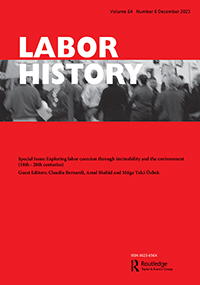Nei saggi che compongono il fascicolo, le forme coercitive di lavoro emergono come temporalmente flessibili, irregolari e informali, nonché spazialmente varie e mobili. Entro tale quadro, la legislazione e le politiche degli attori istituzionali svolgono un ruolo centrale per determinare forme di controllo e di coercizione, ma anche per aumentare l'autonomia dei lavoratori.
Riportiamo di seguito l'indice del fascicolo:
- C. Bernardi, A. Shadid, M. Özbek, Reconsidering labor coercion through the logics of Im/mobility and the environment.
- M. Flamigni, “In consequence of considering herself to be free”. Freedom and (im)mobility in the trans-imperial Caribbean space of the 19th century.
- F. Ricciardi, Freedom of movement versus freedom of work? Coping with the mobility of indigenous workers in a palm oil concession in French Congo (1910-1940).
- G. Rydén, Making iron, producing space! How coerced work defined a Swedish early modern ironmaking region.
- M. Prokic, "We build Barren Island, Barren Island builds us": Of imprisoned humans and mobilized stone in the Yugoslav Cominformist Labor Camp (1949–1956).
- S. Marcelline, Working the salterns. Convict workers in the natural salt pans of Hambantota, in British colonial Sri Lanka.
Alcuni degli articoli citati sono disponibili in open access cliccando su questo link.

